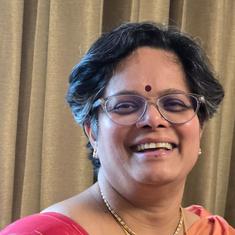More than 111 people have already died across Telangana and Andhra Pradesh from sunstrokes. Following last year’s devastating heat wave that claimed over 2,000 lives in the two states, both governments released Heat Wave Action Plans at the end of March in preparation for the sizzling summer ahead. The Indian Meteorological Department has predicted this summer will be hotter than last year’s with longer heat wave conditions. If April is a bellwether of the coming months, the reach of these action plans may result, once again, in administrations that are overstretched.
Telangana’s multi-pronged plan includes a massive awareness campaign that will use SMS or Whatsapp alerts to circulate heat wave warnings and information posters in bus stands and other public places to warn people of the signs of sunstrokes. The government has rearranged NREGA workers’ hours to avoid the afternoon heat between 12 and 3 pm and will issue advisories to stay indoors during peak temperatures. The action plan also calls for setting up makeshift medical camps and chalivendrams, which are cooling stations with drinking water and oral rehydration salts in public areas. Ranga Reddy District Collector, M Raghunandan Rao, says that the state has purchased five lakh ORS packets in addition to the existing five lakhs in anticipation of the heat.
The most vulnerable, on their own
But as others have noted, victims of heat waves in India are often those with the least access to government provisions like the ones described above. While the states’ heat action plans are underway, common sense seems to govern many of those working outside. Unorganised labourers are left to their own devices in the heat and missing a day of work means losing out on pay.
In Hyderabad’s Koti neighborhood, auto-driver V Anthony waits for customers while parked under a rare patch of shade. “I start work at 8 in the morning and go until 9.30 at night," he said. "After lunch, I may stop for an hour but, for us, the more hours we work, the more we earn. That’s why we can’t follow government rules and regulations.”
Although last year’s heat wave disproportionately affected rural labourers and the elderly, Hyderabad wasn’t without its casualties. Anthony mentions two auto-drivers he knew in Old City who perished from sunstrokes last summer, stressing the importance of taking midday breaks even if it’s at a cost. This year so far, Hyderabad has not witnessed any heat-related deaths.
For the first time, the IMD has begun issuing weather advisories for heat wave conditions between April and June. The forecasts will be updated every fifth day and will provide early warnings ahead of extreme heat, a process that was previously reserved for cyclones and excessive rain. With the mercury having crossed 40 degrees Celsius in Telangana and Andhra Pradesh as early as the end of March, tackling heat waves as natural disasters is a crucial preventative step. The National Crime Records Bureau estimates that 5,778 people across the country lost their lives from heat strokes between 2010 and 2014.
Farmers fend for themselves
In Nalgonda, a district in Telangana that recorded some of the state’s highest death tolls last summer, Durga Rao, a 19 year-old paddy farmer described the precarious conditions in which he works. Rao said he had no knowledge of the new government initiatives but rattled off a list of precautions that he takes throughout the day.
“Covering our ears, we tie a towel on our heads to protect [them] against hot air. From home, we bring buttermilk and drink lots of water. We wear full-sleeves to cover our hands from getting blisters from the sun.”
Rao and the other farmers said that they frequently experience headaches and extreme dizziness. “Ayindi madam…andarki. We’ve all had sunstrokes, madam,” they said, but no one here has died from one this year or last. Rao said that he had heard about a shepherd in neighboring Cherlapalli village who died this month from heat-related causes. He was, according to Telangana’s Disaster Management Department, one of the two casualties in Nalgonda. Still, Rao and the other farmers, some who reveal the hardened blisters that dot their hands, seem unfazed by the sweltering heat.
For those whose jobs provide them no respite from the sun, knowing how to deal with heat stroke symptoms is particularly essential in preventing a loss of lives. According to YK Reddy, director of the IMD in Hyderabad, the lack of information disseminated last summer contributed to the steep death toll. Hospitals have been asked to deploy additional medical staff during heat wave days this summer in order to deal with the influx of heat stroke patients.
District Collector M. Raghunandan Rao called the state’s heat wave action plan “reasonably exhaustive,” pointing out that it touched on every doable aspect within the state. He admitted, though, that the plan cannot reach sectors that the state has no capacity to regulate – private agricultural labourers, the homeless, and daily wage earners working under contract.
“Obviously there is anxiety," he said. "We are heading into a very tough 60 days”.










